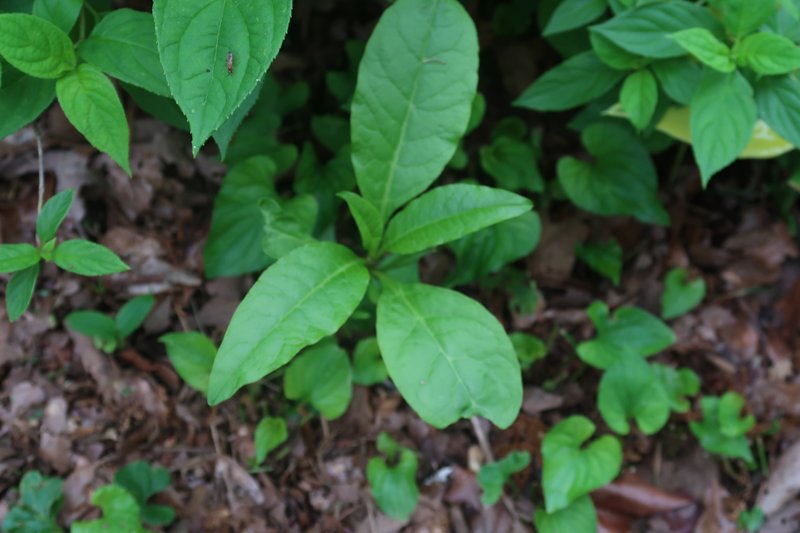What Plants Don't Like Epsom Salt and Just How It Impacts Development
What Plants Don't Like Epsom Salt and Just How It Impacts Development
Blog Article
Discover the Certain Plants That Are Detrimentally Influenced by Epsom Salt Application
Epsom salt, a popular house treatment for different horticulture troubles, is usually commended for its valuable effects on plant growth. Recognizing the specific plants that can be detrimentally influenced by Epsom salt is essential for any type of garden enthusiast looking to optimize their plant treatment regimen.
Roses

Roses, especially conscious modifications in their environment, can be adversely impacted by the application of Epsom salt. While Epsom salt is typically used as a fertilizer to advertise plant development and enhance flowering, roses are one of the plants that do not respond well to its application. The high magnesium material in Epsom salt can disrupt the uptake of other essential nutrients by the rose plants, causing deficiencies that show up as yellowing leaves or stunted development.

Tomatoes
Tomatoes, recognized for their flexibility in culinary applications, can exhibit negative impacts when exposed to Epsom salt due to their certain nutrient demands. While Epsom salt is frequently proclaimed as a solution for numerous plant issues, including bloom end rot in tomatoes, its application can bring about detrimental end results if not made use of sensibly. Tomatoes are heavy feeders that require a balanced consumption of nutrients, specifically calcium, to grow. Too much Epsom salt, which is magnesium sulfate, can disrupt the fragile nutrient equilibrium required by tomatoes, possibly causing shortages in various other essential nutrients like calcium. This imbalance may manifest in symptoms such as stunted growth, yellowing leaves, or even lowered fruit manufacturing in tomatoes. For that reason, when thinking about making use of Epsom salt on tomatoes, it is critical to comply with advised application rates and soil testing to avoid unplanned repercussions on the total health and wellness and productivity of these precious garden plants.
Peppers
Peppers, revered for their various colors and levels of spiciness, can show sensitivity to adverse effects from Epsom salt when not used with treatment and factor to consider for their details nutritional requirements. what plants don't like epsom salt. Peppers, belonging to the Solanaceae family members, require a delicate balance of nutrients to thrive. While Epsom salt is recognized to boost magnesium levels in plants, too much application can interrupt this balance, leading to adverse results on pepper plants
When peppers are revealed to high levels of magnesium from Epsom salt, it can hinder the plant's capability to absorb other crucial nutrients like calcium and potassium. This discrepancy might materialize in signs such as leaf discoloration, stunted development, and decreased fruit production. Furthermore, the excessive magnesium can modify the dirt pH, additional exacerbating nutrient uptake concerns for peppers.

Rhododendrons
Given the sensitivity of certain plant types to inequalities triggered by Epsom salt, it is vital to consider the influence on Rhododendrons, which likewise need specific nutrient levels to thrive. Rhododendrons are acid-loving plants that like acidic soil problems with a pH variety between 4.5 and 6.0. Epsom salt, chemically called magnesium sulfate, can alter the dirt pH and interrupt the fragile equilibrium of nutrients essential for Rhododendron health.

To maintain the optimum development and visit our website health of Rhododendrons, it is crucial to prevent the unplanned use Epsom salt and rather focus on offering the details acidic dirt conditions and nutrients that these plants need for prospering.
Azaleas
These popular blooming plants are typically discovered in yards, landscapes, and parks due to their appeal and versatility. While Epsom salt is frequently used as a solution for magnesium deficiency in plants, its application to azaleas can have unfavorable effects.
When Epsom salt is applied to azaleas, it can change the dirt pH, making it more acidic. Azaleas prefer somewhat acidic dirt problems, and an unwanted of magnesium from Epsom salt can interrupt this balance, causing nutrient imbalances and prospective toxicity issues. The inaccurate application of Epsom salt can result in stunted development, yellowing of fallen leaves, and total decrease in the health and wellness of azaleas. For that reason, it is critical to be cautious when taking into consideration making use of Epsom salt on azaleas to prevent any type of negative repercussions on these delicate decorative hedges.
Final Thought
Finally, it is essential to be knowledgeable about the certain plants that can be adversely influenced by the application of Epsom salt. Roses, tomatoes, peppers, rhododendrons, and azaleas are some examples of plants that may not take advantage of Epsom salt and could also suffer harm. It is vital to study and understand the requirements of each plant species before utilizing Epsom salt as a fertilizer to ensure their wellness and wellness.
Comprehending the details plants that can be adversely impacted by Epsom salt is essential for any kind of gardener looking to enhance their plant treatment regimen. While Epsom salt is commonly utilized as a plant food to promote plant development and enhance flowering, roses are one of the plants that do not respond well to official website its application.Excessive use of Epsom salt can additionally result in an accumulation of salts in the dirt, leading to root damage and dehydration of the rose plants. While Epsom salt is understood to enhance magnesium degrees in plants, excessive application can disrupt this stability, leading to unfavorable effects on pepper plants.
The high salt content in Epsom salt can also dehydrate Rhododendron origins, triggering additional anxiety and damage to the plant. (what plants don't like epsom salt)
Report this page